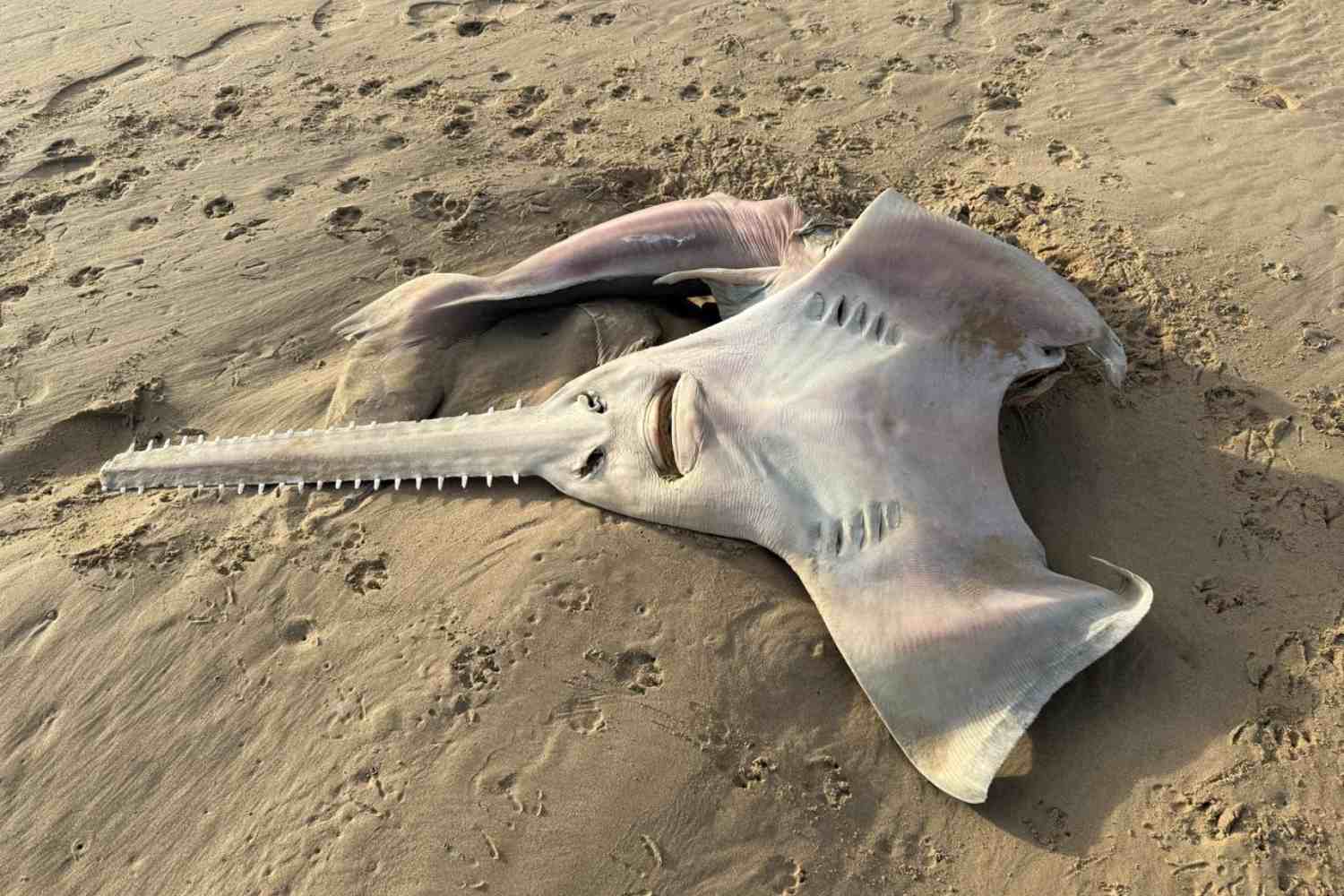The discovery of a rare sawfish carcass on South Africa’s Eastern Cape coast offers hope the species may not be extinct locally, while underscoring urgent conservation needs.

@East London Museum/Facebook
An extraordinary discovery along the shores of South Africa’s Eastern Cape has left both locals and scientists astonished. The carcass of a sawfish, roughly 10 ft (3 m) long, was found in poor condition — yet its presence is scientifically priceless. This species was believed to have vanished from the region decades ago.
A rediscovery reminiscent of the coelacanth
The find was reported to Kevin Cole, a naturalist at the East London Museum, an institution famous for housing the legendary coelacanth — that prehistoric fish rediscovered in 1938 after being thought extinct for millions of years. After examining photos of the carcass, Cole confirmed the species: a largetooth sawfish (Pristis pristis), one of only two sawfish species still occasionally seen in South African waters.
“The last confirmed sighting dates back to 1999,” he explained, “when a specimen was accidentally caught in a shark net.”
For marine researchers, this is nothing short of a rediscovery moment. Sawfish were once common in estuaries and coastal waters, but their populations collapsed rapidly, to the point where many assumed they were gone for good.
Characteristics and threats to the species
Sawfish belong to the Pristidae family, relatives of sharks and rays, and are instantly recognizable by their elongated, tooth-studded rostrum. This “saw” serves multiple purposes: it can be used to stir up sand in search of food or to slash at prey with surprising agility. The largest individuals can grow to an astonishing 26 ft (8 m), making them some of the most formidable coastal predators on the planet.
Unfortunately, sawfish are critically endangered (CR) on the IUCN Red List. Habitat loss, mangrove destruction, and accidental bycatch have devastated their numbers. This discovery highlights, once again, how fragile South Africa’s marine ecosystems have become — and how vital conservation efforts are to give these species a chance at survival.
Signs of a possible orca attack
Early assessments of the carcass revealed wounds that suggest it may have fallen victim to a marine apex predator, most likely an orca. South Africa is home to two notorious killer whales, nicknamed Port and Starboard, known for their unusual hunting strategy: they target sharks to extract and eat their internal organs. It wouldn’t be far-fetched to imagine that this sawfish, too, may have crossed their path.
While a definitive cause of death has yet to be established, the evidence is consistent with the precision attacks these orcas are infamous for.
A warning for conservation
Even in its deteriorated state, the carcass is a powerful reminder that sawfish may not be entirely gone from South African waters. For marine biologists, this isn’t just a curiosity — it’s a call to action. Coastal ecosystems, which shelter countless endangered species, are under unprecedented pressure. Strengthening their protection could mean the difference between extinction and recovery for creatures like the sawfish.
As Kevin Cole put it: “This is a species that’s been slipping through the cracks of conservation. Maybe this is our wake-up call.”
An important discovery for marine conservation in South Africa. A sawfish, thought to be locally extinct in our waters,…
Posted by East London Museum on Tuesday, September 23, 2025
Source: East London Museum
